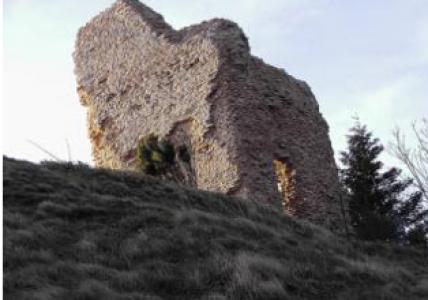The Roccaccio
Primary tabs
The Roccaccio
The Roccaccio is the ruin of the primitive castrum ditches, built by Byzantine, in Greek fossaton means fortification on the hill, in function of defense of the Flaminia and the surviving populations, after the disappearance of the Roman Helvillum, current village, presumably occurred during the Gothic war. Byzantine of the VI century AD Tombs of this barbarian era were found in 1963, about 30 meters south of the ruin. Strategic and impregnable border fortress, the only and solitary bulwark of the entire north - eastern Umbrian for about six centuries, in the '200 sees at its feet the burgus or second castrum moats or current town center, in whose walls it is incorporated, and to whom he transfers, like a father to his son, the functions that had been his. The grafting of the second, municipal and medieval low, on the reality of the first, feudal and medieval high, establishes the cultural homogeneity between the two and reveals what is the continuity between the two great eras, in other ways so different, our Middle Ages. An idea about his custody is given by the Capitola arcis sive Rocche Foxati written in Latin and in the vernacular in 1508, in which the municipality entrusted the Fortress to the fossilized Perantonius and his family for a year, rewarded with 18 coins of the Marca and as he promises and swears, present two guarantors, of good et fideiter dictam arcem custodire et bonam, let us make a cum suis filiis de die et nocte and respect the chapters, under penalty of 100 gold ducats in case of non-compliance. These also provide that the custodian puts two guards at night, which can not be sent to any bandit or condemned by Perugia, nor to anyone who was not subiecto the court de moato ... socto pena de perditione de tucti li soi goods, which the Roccanon can be opened after the evening sound of the AveMaria and up to the aurora. In 1672 you see 30 scudi to spend on its walls that minaccian ruina, in 1701 is inserted for the last time among the municipal items of expenditure (60 scudi), in 1817 appears in a drawing, still standing, with lots of mastio or cassero. Today only the ruins remain.

